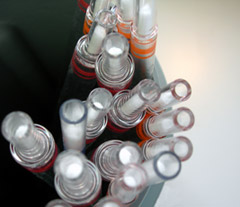Fixed Assets as Items of Value and Means of Production
Fixed or tangible assets are in the form of equipment and machinery, property, plants, or other pieces that are used by companies for their normal operations. They are used to manufacture goods rather than held for resale. For example, cars, trucks, and other vehicles are considered inventory and not fixed assets. Employee cars, delivery vehicles, and heavy duty equipment are examples of the latter while personal vehicles are not included in the balance sheet.
Features, Uses, and Benefits for Businesses
Tangible assets are used by companies to supply, produce, distribute, and offer products and services for rentals, consumption, administrative purposes, and others. They cannot be sold quickly meaning that they are not liquid like cash and others. There are long-term assets such as equipment, vehicles, buildings, and other property. The useful life of equipment and vehicles is usually 7 years, but this depends on their exploitation and functioning. Buildings, plants, and other structures are also subject to wear because this is where operations take place. Their value is recorded at the time of conclusion or transfer of ownership. Because buildings have a long useful life, their construction cost or purchase price is recorded. There are also long-term intangible assets such as copyrights, patents, and goodwill.

Fixed assets offer many benefits to businesses, one being that they allow them to process raw materials, produce and transport goods, recycle waste, and more. The sale of goods and services allows businesses to make profits. Profits depend on factors such as the value or cost of equipment and whether it is measured accurately and reliably. Other factors are the inflow of cash and economic benefits. Another advantage is that possessions are treated favorably for tax purposes.
Types and Industries
Businesses use different types of resources, depending on their industry or sector. For example, mining companies use heavy equipment vehicles such as excavators and bulldozers. Some companies use heavy equipment such as loaders, scrapers, snowcats, harvesters, and bulldozers. Other examples include feller bunchers, construction and mining tractors and trucks, reclaimers, and drilling machines. The types of assets used also depend on the final product. Companies that extract precious metals use different types of equipment than those producing ventilators, anesthesia machines, syringe infusion pumps, and apnea monitors.
In general, fixed assets, whether used in agriculture or metal extraction, are items of value. Besides machinery and equipment, they include fittings, fixtures, computers and printers, office furniture and equipment, and others.
Depreciation
The rate of depreciation depends on many factors such as useful life, whether the company owns or leases the property, the type of possession, when it was purchased, and others. There are different ways to calculate depreciation, including double-declining balance, straight line, and others. The easiest way is to use an online calculator. Alternatively, the asset’s value can be divided by its useful life. It is also useful to create a schedule that includes factors such as the ending and beginning book value, rate, depreciation expense and cost, etc. Businesses track their assets to monitor their use, prevent theft and misuse, and for the purpose of maintenance and repairs. Examples of equipment that is tracked include fittings, fixtures, buildings, and machinery and equipment. Accountants usually use professional software to this purpose.
Reevaluation
Reevaluation is a term describing a process that is used to find the true or fair market value of machinery and equipment. It is different from depreciation in that the procedure does not take age into account.
Fixed vs. Intangible Assets
The main difference between the two classes is that intangible assets are not physical. Examples include goodwill, methodologies, copyrights, trademarks, patents, and brand recognition. Depending on their features, they can be categorized as definite or indefinite. Some types can be classified as either definite or indefinite. For instance, as long as a company exists, its brand name is regarded as an indefinite possession. It becomes definite when rebranding takes place. Basically, an intangible asset is something that cannot be touched, seen, or smelled, i.e. it doesn’t have physical properties but may contribute to the long-term success of the company. Fixed assets are items that have a material dimension.
Related Articles
ROI as an Indicator of Profitability and Financial and Business Performance
Return on investment is an indicator that measures the efficiency of a group of funds or one such vehicle. It is a measure of profitability and an indicator of performance that helps business to assess their investments in capital equipment and inventory, pricing policies, etc. In essence, ROI is...
Liquid Assets for Better Flexibility and Improved Cash Flows
A liquid asset is an item of value that can be sold and converted into cash quickly. Cash is the most straightforward example that can be used immediately for loan repayment or the purchase of goods and services. Examples of Liquid AssetsBesides cash, there are other examples such as life insurance...
Asset Classes That Bring Long-Term Benefits
Assets can be categorized in different ways, but the main classes are tangible and intangible. They can be subdivided into fixed and current, and examples include furniture, machinery, and real estate. Intangible Assets and Economic BenefitsBrands, goodwill, and intellectual property fall in this...
Working Capital Helps Companies to Measure Financial Stability
Working capital refers to the operating liquidity of an organization, corporation, or a company. It is an indicator that measures short-term financial stability and health. This is the amount of liquid assets that a business has to improve and expand its operations. Negative working capital...
